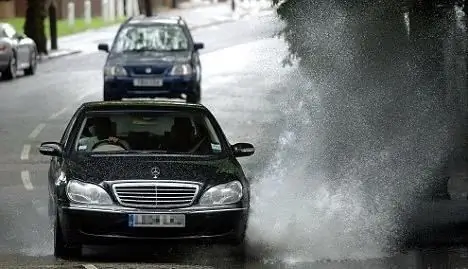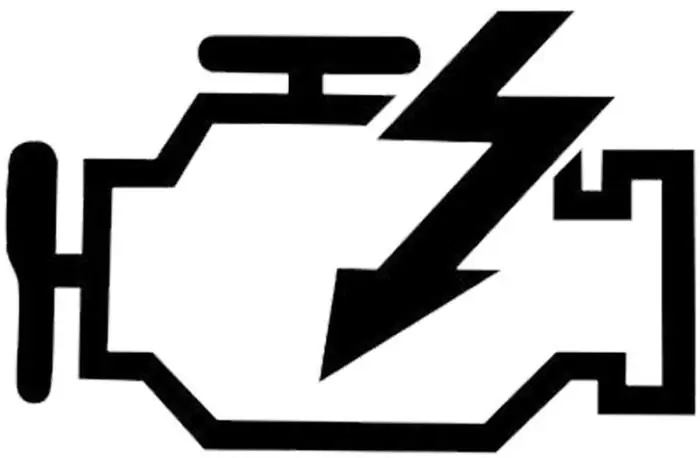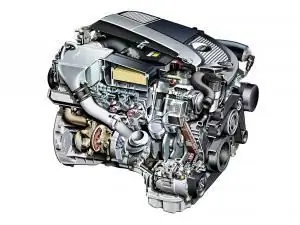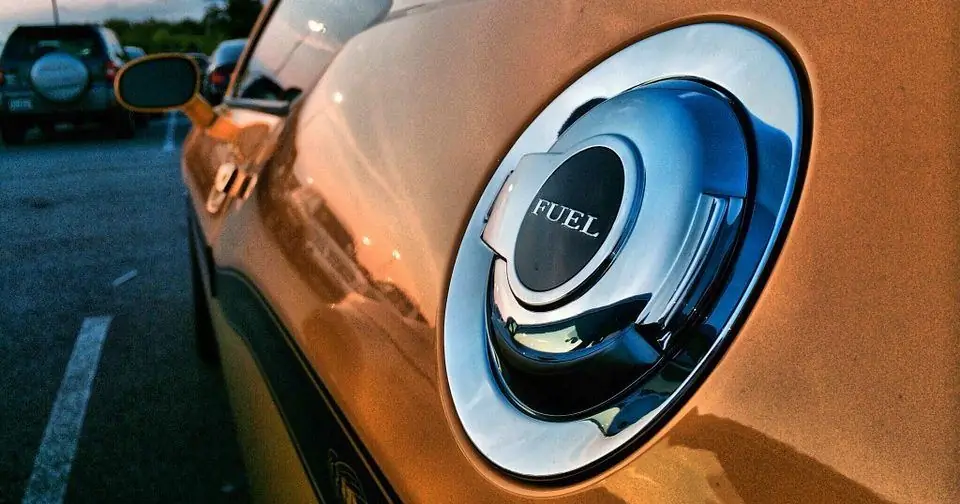2025 Author: Erin Ralphs | [email protected]. Last modified: 2025-01-22 21:14:11
Practically every more or less experienced driver has heard of the practice of using alcohol as a gas tank cleaner from water. Given that the winter cold will come very soon, it is simply necessary to remove excess liquid from the tank, because it can cause some problems (we will talk about them below). Some people think that you can pour alcohol into the gas tank, which will effectively remove water, but there are opposite opinions. Nevertheless, various moisture displacers are now being sold on the market, but their price is quite high (a regular branded tube can cost 400 rubles or more). Therefore, many drivers prefer to mix alcohol and gasoline, which will cost only 20-30 rubles. Let's try to figure out what this practice is and whether it is dangerous to apply.

Why put alcohol in a gas tank?
There are various reasons why water can get into the tank. Given that its density is higher,than the density of the fuel, it settles at the bottom of the tank. The fuel pump pumps fuel almost from the bottom, so some of the water can be captured along with gasoline. This will adversely affect the efficiency of the power system and engine. If possible, it is better not to allow this.
In winter, the bottom layer of water in the tank can freeze at all, and the ice will block the way for gasoline to enter. As a result, the car will not even start. And if the car is taken from a cold street, brought into a warm garage, and after that it starts up successfully (the ice melts), then this indicates the presence of water in the tank. In this case, you can try pouring alcohol into the gas tank to remove excess moisture.
How does water even get in there?

There are different ways to form water in a tank. At least three can be distinguished:
- Condensation. In five years, about 100-200 ml of water can form in the tank. This is negligible.
- Precipitation. When refueling in snow or rain, water may enter the tank in small quantities. On average, over several years, about 100 ml of water can run up.
- Gasoline. The fuel itself, which is located in the underground storage, may also contain water. This indicates either the presence of condensate, or dishonest sellers. Even if you buy 95 petrol, which is usually more expensive, you cannot guarantee that it will not contain condensation.
If we take into account all sources of moisture, then in 3-4 years 100-200 ml of water can form at the bottom, which it is desirable to remove from there.
What is the danger of moisture in the tank?
Manyuntreated metal fuel tanks can simply rust from water. However, most often the danger lies precisely in the freezing of water at a negative temperature. Now, in almost all modern cars, the fuel pump is installed directly in the tank. It has a fine mesh that prevents debris from entering the fuel system. She does not miss anything but gasoline. It is on this grid that moisture settles, and in winter it turns into ice, thus clogging the passage for fuel. Because of this, the fuel pump may even fail due to overheating.
Therefore, many masters recommend pouring alcohol into the gas tank at least once a year. Removing water condensate in this way is a very common practice.

What to pour?
Alcohols perfectly remove moisture. Ordinary ethyl alcohol shows itself well, you can also use isopropyl or methyl alcohol (poisonous). You need to add a little to the tank - about 200 ml per 40 liters of gasoline.
The density of alcohol is higher than the density of the fuel, so when added, alcohol sinks to the bottom and mixes with water. Speaking very roughly, when mixed, vodka is formed (this is if ethyl alcohol is poured). However, due to the ban, it is not sold in pharmacies, and it is difficult to find it. However, you can look for isopropyl in household markets or in radio products.
You can also use solvent or acetone. Of course, it is best to add alcohol to gasoline. It is more efficient to remove water with its help, but these drugs alsocope. Solvent is a little worse in this regard, since its octane number is in the region of 60-70, and the number of acetone is about 100.
You also need to fill them into the tank in a small amount - about 250-300 ml per 40 liters of fuel. Moreover, it is desirable to pour them immediately after refueling.

What happens if alcohol or acetone is added to gasoline?
Given that alcohol or acetone does not mix with gasoline, there are questions about the effectiveness of this method of removing moisture from the tank. In fact, the purpose of alcohol is not to mix with gasoline. Alcohol or acetone, when mixed with water, forms a combustible mixture that can easily pass through the fuel pump filter and ignite in the combustion chamber.
As a result, excess moisture or water will be removed from the fuel tank, and the water itself with acetone, with a very small amount, will not cause any significant harm to the fuel system or the engine itself. Therefore, it is not necessary for acetone to be mixed with gasoline in order for the tank to be effectively cleaned of water. Therefore, it is not always appropriate to pour alcohol into the gas tank. You can even get by with ordinary acetone, which is sold everywhere.

As for the cost, 500 ml of acetone costs an average of 70 rubles. We only need half of this (250 ml), which will cost 35 rubles. It's cheap enough to completely remove water from a fuel tank.
Shop Displacers
Many ownerscars believe that acetone or alcohol can harm the engine or its power system, so they prefer not to pour these products into the gas tank. Some write that such products harm rubber bands, plastic, and even sensors of various car systems. And although all this is at the level of rumors, many car owners do not want to take risks. Although you should not panic too much about this, since 250 ml of acetone will definitely not cause any harm. Moreover, it is possible that acetone will be able to dissolve years of deposits on the bottom of the fuel tank, and in some cases it will even clean the nozzles, and they will work better. Rubber and plastic in fuel line construction are also attacked by acetone, but adding 250 ml every 4 years will not hurt.
In general, you can buy some cheap store-bought product (fuel dryer) and fill it up. If you read the composition of this product, then the following substances will most likely be indicated there: ethers, alcohols, solvent, surfactant. In fact, this is the same thing, only in a special package. The cost of such a drug can vary between 100-400 rubles. Manufacturers recommend using them for prevention, which is logical, because you have to remove water every 3-4 years. It is beneficial for the manufacturer that their dehumidifier is bought more often.
Can I add vodka?

Some drivers pour vodka into the tank, but this is completely stupid. Yes, it contains alcohol, but it contains even more water. Therefore, to remove liquid fromIn no case should you pour vodka into the tank. This will only increase the water content at the bottom. Only alcohol (or acetone) can dissolve and absorb it.
Conclusion

Alcohol in a gas tank is almost a folk remedy for removing condensate from the bottom. It is cheap and effective, and its presence in the fuel composition will not harm the engine or the fuel line in any way. Moreover, some brands of gasoline specifically use alcohol as an additive to increase the octane number, which once again confirms the complete safety of its use.
Given the price of 95 gasoline and the alcohol itself, removing water from the system will not require large financial investments. Therefore, if there is a suspicion of the presence of liquid in the tank, then feel free to fill in 200 ml of alcohol and forget about this problem for the next 3-4 years. Judging by the reviews of car owners, this method is really working and effective. However, drivers often argue about exactly how much alcohol or acetone should be poured. But it is clearly not worth zealous here. It is logical that a liter of alcohol in the fuel tank with a small amount of gasoline will only harm the car.
If in doubt about the use of acetone or alcohol, then buy some kind of fuel tank dryer in the store and follow the instructions. It will be safer.
Recommended:
Engine water hammer: causes and consequences. How to avoid engine water hammer

The internal combustion engine is the heart of the car. The service life of the unit depends on the conditions under which it is used. But there are breakdowns that have nothing to do with the current state of the motor. This article will discuss what an engine water hammer is, why it happens and how to avoid this kind of breakdown. But first things first
Why is the Check Engine light on? Why does the check engine light come on?

In the age of modern technology, the technical characteristics of a car provide for the presence of a large number of electronics. Cars are literally stuffed with it. Some motorists do not even understand why it is needed or why this or that light is on. In our article we will talk about a small red light bulb called Check Engine. What is it and why does the "Check" light up, let's take a closer look
DIY gas tank repair. How to repair a fuel tank

Often, motorists are faced with a malfunction of the fuel tank. In most cases, it starts to flow. To fix the problem with minimal losses, motorists have come up with different ways to self-repair
Why does the car twitch while driving? Reasons why the car twitches at idle, when shifting gears, when braking and at low speeds

If the car twitches while driving, it is not only inconvenient to operate it, but also dangerous! How to determine the cause of such a change and avoid an accident? After reading the material, you will begin to understand your "four-wheeled friend" better
How to remove water from a car gas tank: methods and step by step instructions

Let's try to figure out how to remove water from a car's gas tank and do it as safely as possible. Both for the driver and for the system itself. We will also figure out why moisture penetrates the fuel compartment and how to avoid it

